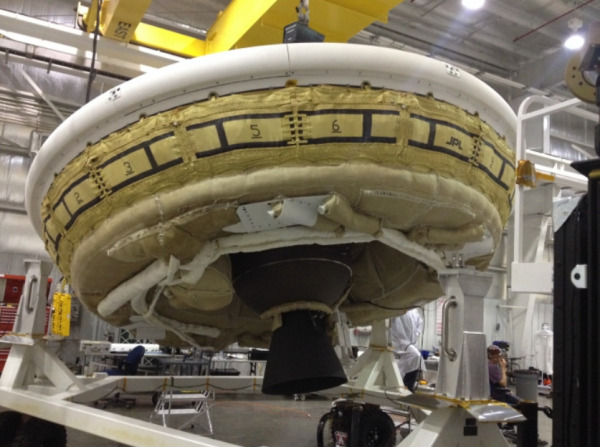NASA's Flying Saucer Grounded Again
NASA's "flying saucer" won't be taking to the skies today. with the trials of the distinctive circular craft intended for Mars postponed over weather concerns. The Low Density Supersonic Decelerator (LDSD) – colloquially known as the Martian Flying Saucer – was to finally test the atmospheric braking systems NASA hopes will allow it to safely deploy larger payloads, including human settlers, to the red planet. However, the path to such testing has not gone smoothly.
The team at NASA's Jet Propulsion Lab (JPL) had initially intended to test the system over Hawaii back on June 3rd, but weather conditions forced the plans to be scrapped.
Second, third, and fourth scheduled dates earlier this month were also cancelled at the last minute, as the winds refused to play ball. NASA aims to use balloons to carry the flying saucer test rig up to the correct altitude, and so the winds "have to be just the right speed and direction" for that to safely take place.

The latest date for a possible launch was today, but that too has been cancelled, with NASA saying that the next possible window is June 14th.
The LDSD's mission is relatively simple: carry down large payloads to the Martian surface, without damaging them. The saucer uses a combination of a 20-foot inflatable doughnut that increases drag – that deploys at around Mach 3.8 – and then, when the LDSD has slowed to around Mach 2.5, a supersonic parachute springs out to allow for a controlled landing.
If it works as the JPL team hopes, the braking tech could deliver objects twice as heavy as the Curiosity rover, or even heavier if multiple parachutes were combined. Curiosity demanded some out-of-the-box thinking, with a complex floating deployment platform that helped guide the robotic rover down to the Mars surface.
Although distinctive, it's not the most exciting space ship design NASA has been showing off recently. A concept for a warp-drive equipped Star Trek-styled craft broke cover recently, hinting at the possibilities when engine design developers sufficiently for manned deep space exploration to take place.
SOURCE JPL
